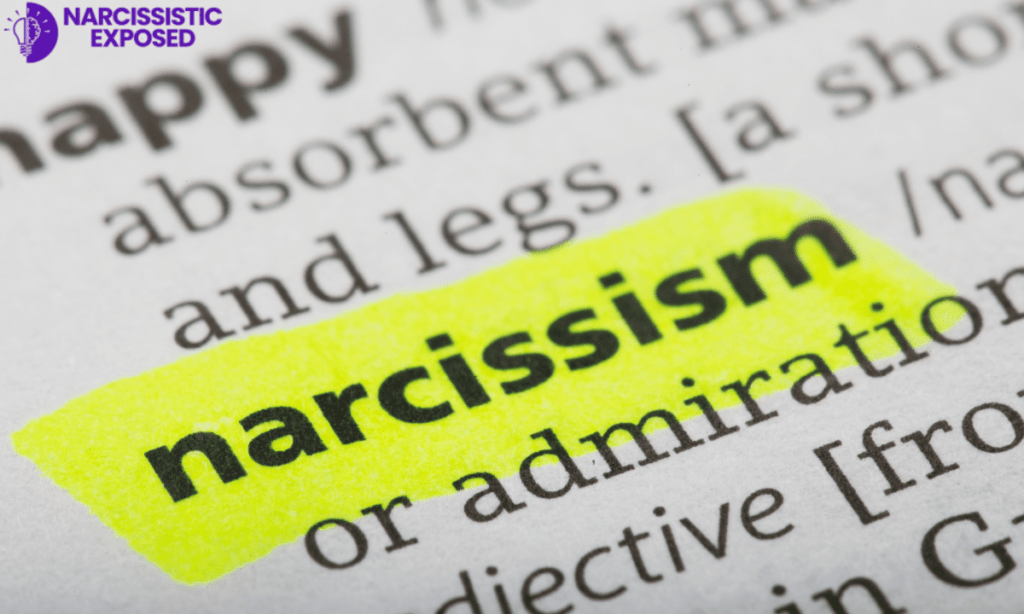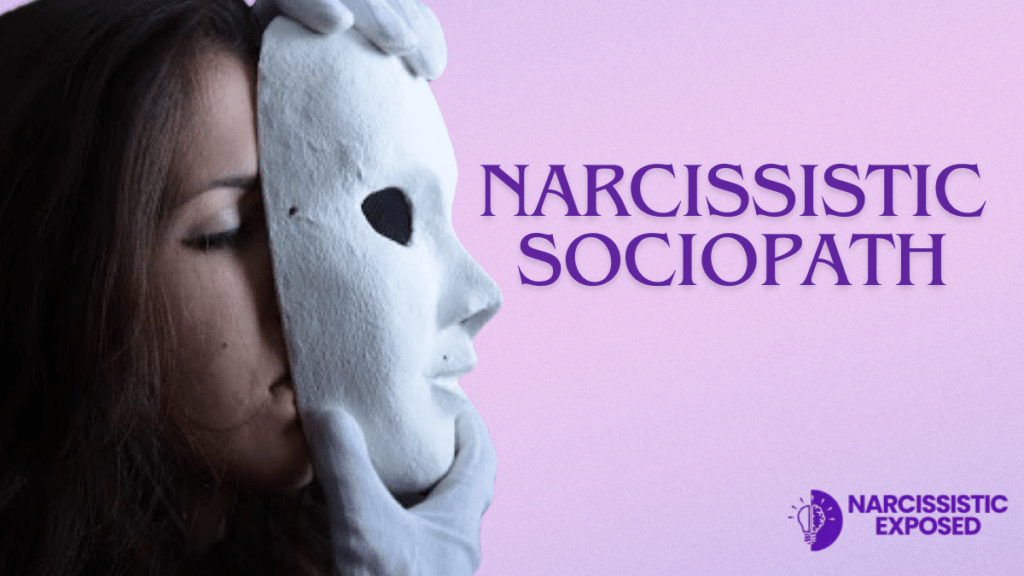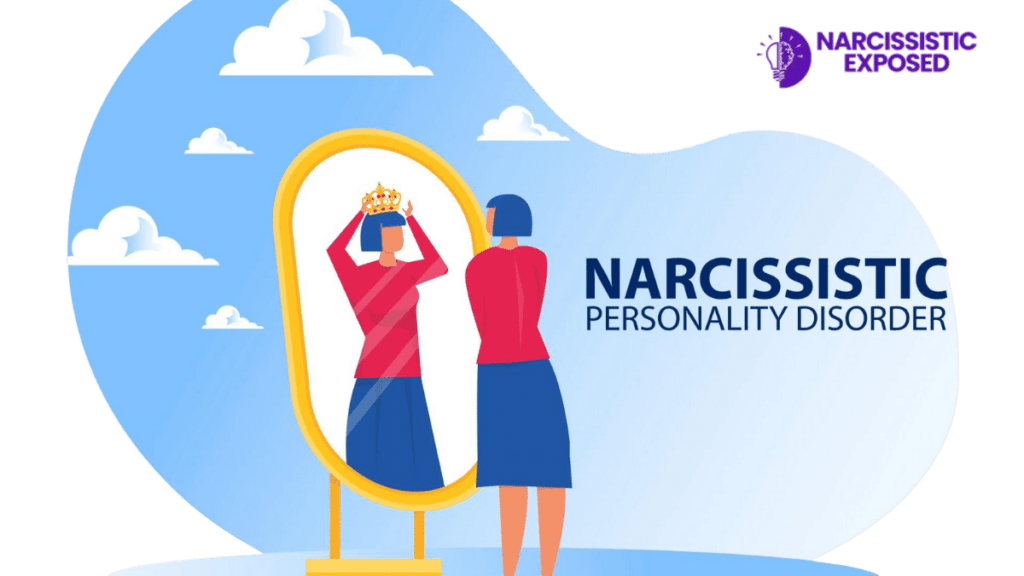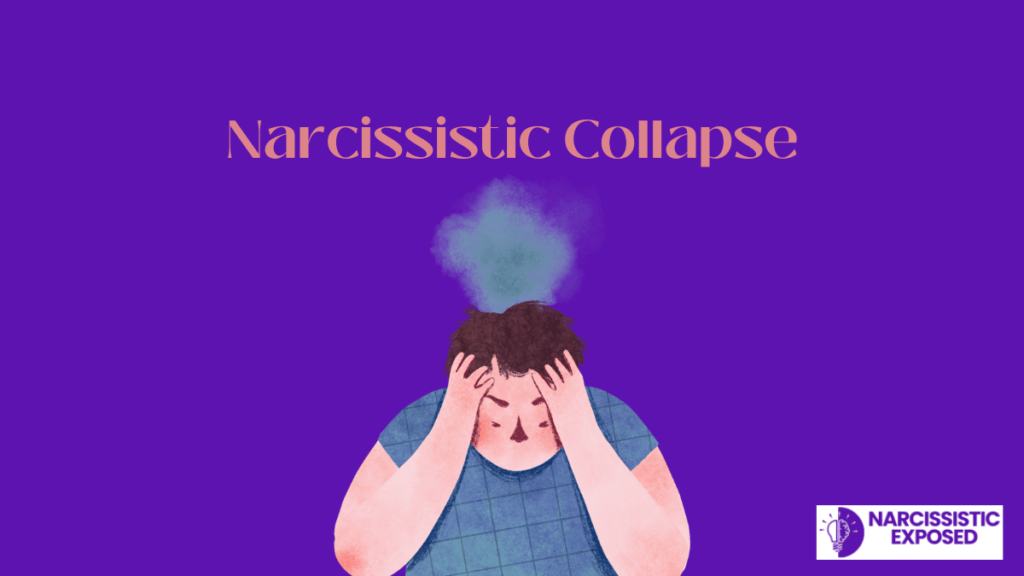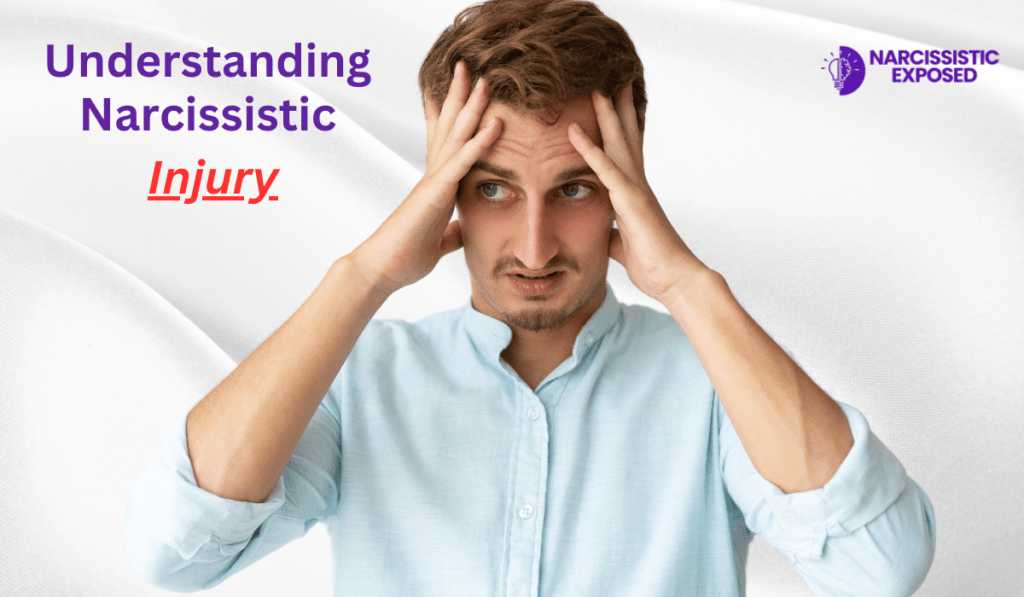
Narcissistic injury, a term deeply rooted in psychological discourse, refers to the emotional turmoil and rage that arises when a narcissist feels their self-esteem or self-image has been threatened or undermined. This concept is pivotal in understanding not just the psyche of someone with narcissistic tendencies but also the intricate dynamics that unfold in relationships involving a narcissist.
Understanding narcissistic injury is crucial for several reasons. For therapists and psychologists, it’s a key concept in treating and managing clients with narcissistic personality disorder (NPD) or traits. For those who find themselves in relationships—be it familial, romantic, or professional—with narcissists, comprehending the dynamics of narcissistic injury can provide invaluable insights into their behavior. It offers a lens to view seemingly disproportionate reactions and can guide more effective strategies for interaction.
This article aims to delve into the depths of narcissistic injury, unraveling its causes, manifestations, and coping mechanisms, with a perspective enriched by personal insights and professional expertise in psychology and communication.
Table of contents
What is Narcissistic Injury?
Definition and Characteristics
Narcissistic injury occurs when an individual with narcissistic tendencies perceives an attack or slight to their self-esteem or self-image. This is not merely a bruised ego that one might commonly experience; it’s an intense reaction to anything that challenges or questions their sense of self-importance or perceived superiority. Such an injury can stem from various triggers, from direct criticism to a perceived lack of acknowledgment or admiration.
The characteristics of a narcissistic injury are distinct and often more intense than typical emotional responses. These can include:
- Extreme Anger or Rage: Unlike a momentary irritation, this reaction is often disproportionate to the perceived offense.
- Defensive Behavior: There is a strong tendency to defend oneself immediately, sometimes in aggressive or hostile ways.
- Retaliation: The individual might seek revenge or attempt to demean the person they believe has caused the injury.
- Denial and Projection: Narcissists may deny any fault and project their negative traits onto others.
- Emotional Withdrawal: Sometimes, there might be a complete withdrawal from the situation or relationship to protect their self-image.
Differences from Normal Emotional Responses
While everyone experiences hurt feelings or reacts to criticism at times, the way a narcissist responds is fundamentally different:
- Intensity: The emotional response in narcissistic injury is typically much more intense and can be explosive or deeply internalized.
- Duration: The aftermath of a narcissistic injury can last significantly longer, with the individual ruminating over the offense and maintaining a grudge.
- Impact on Relationships: Whereas a typical emotional response might lead to temporary strain, narcissistic injuries can result in lasting damage to relationships due to the severity of the reactions.
- Self-Reflection: Unlike healthy emotional responses that can lead to self-reflection and growth, narcissistic injuries often entrench the individual deeper into their defensive and self-aggrandizing behaviors.
- Empathy Deficit: Narcissistic injury responses lack empathy towards the feelings or perspectives of others involved, focusing solely on the narcissist’s emotional turmoil.
In essence, a narcissistic injury is a magnified response to a perceived threat to the narcissist’s self-image, marked by intense emotions and behaviors that significantly differ from typical emotional responses. Understanding these nuances is crucial for comprehending the actions and reactions of individuals with narcissistic traits.
Causes of Narcissistic Injury
Common Triggers
Narcissistic injury can be triggered by a range of situations, often seemingly minor or inconsequential to others. These triggers are perceived threats to the narcissist’s self-esteem or self-image. Common triggers include:
- Criticism or Negative Feedback: Any form of criticism, no matter how constructive, can be perceived as an attack on their self-worth.
- Failure or Defeat: Experiencing failure, especially in public or professional settings, can be intolerable for a narcissist.
- Being Ignored or Overlooked: Not receiving expected attention or being overlooked in social situations can trigger a response.
- Challenges to Authority or Expertise: Having their judgment, authority, or expertise questioned or challenged can be a significant trigger.
- Comparison with Others: Being compared unfavorably to others, especially in areas they value, can cause injury.
Psychological Basis of the Reactions
The reactions seen in narcissistic injury stem from deep psychological mechanisms and are rooted in the fragile self-esteem of the narcissist. Key aspects include:
- Fragile Self-Esteem: Despite a facade of confidence and superiority, narcissists often have a very fragile self-esteem that depends heavily on external validation and admiration.
- Grandiose Self-Image: Narcissists create an inflated self-image to shield themselves from deep-seated feelings of inadequacy and vulnerability. When this image is threatened, it triggers a defensive reaction.
- Lack of True Self-awareness: A lack of genuine self-awareness means that narcissists often don’t recognize their vulnerabilities. Instead, they externalize issues, seeing them as attacks from others.
- Control and Superiority: Their need for control and always being seen as superior drives their reactions. Any threat to this perception is met with an intense emotional response.
- Developmental Factors: Childhood experiences, such as excessive pampering or extreme criticism, can contribute to the development of narcissistic traits and influence their reactions to perceived threats.
Understanding these triggers and the psychological basis of a narcissist’s reactions is crucial in navigating interactions with them. It provides insights into why seemingly minor incidents can lead to significant emotional upheaval and offers a basis for managing these interactions more effectively.
Manifestations of Narcissistic Injury
Behavioral Patterns and Reactions
The behavioral manifestations of narcissistic injury are diverse and can significantly impact both the narcissist and those around them. Key patterns and reactions include:
- Aggressive or Hostile Responses: In the wake of narcissistic injury, individuals may react with overt aggression or hostility, especially if the injury is public or perceived as particularly humiliating.
- Passive-Aggressive Behavior: Sometimes, the response is less direct, with the narcissist engaging in passive-aggressive behaviors, such as subtle insults, sullenness, or deliberate procrastination.
- Withdrawal and Isolation: Following an injury, a narcissist may withdraw from social interactions or relationships, particularly if they feel exposed or vulnerable.
- Projection and Blame-Shifting: Narcissists often project their insecurities onto others and shift blame to avoid facing their shortcomings.
- Gaslighting: In an attempt to preserve their self-image, narcissists may engage in gaslighting—manipulating others into questioning their perceptions and sanity.
- Manipulation for Sympathy: They might also attempt to manipulate the narrative to gain sympathy and reaffirm their superiority.
Impact on Relationships
The impact of narcissistic injury on relationships can be profound and far-reaching:
- Strained Personal Relationships: Family, romantic, and platonic relationships can become strained due to the narcissist’s unpredictable and often hostile reactions to perceived threats.
- Workplace Conflict: Professional relationships can suffer, with narcissistic injury leading to conflicts, power struggles, and a toxic work environment.
- Erosion of Trust: The narcissist’s tendency to deflect blame, manipulate, and gaslight can erode trust in relationships, making healthy, honest communication difficult.
- Emotional Toll on Partners or Family Members: The partners or family members of narcissists often experience an emotional toll, dealing with the ups and downs of the narcissist’s reactions and the constant need to tread carefully.
- Impediment to Personal Growth: Both the narcissist and those in close relationships with them may find personal growth and development impeded due to the constant focus on managing the narcissist’s ego and reactions.
Narcissistic injury can, therefore, have a ripple effect, touching every aspect of the narcissist’s life and significantly impacting their relationships. Recognizing these patterns and understanding their consequences is vital for those dealing with narcissists, whether personally or professionally.
Coping Mechanisms for Victims
Strategies for Those Affected by Someone Experiencing Narcissistic Injury
Living or interacting with someone who frequently experiences narcissistic injury can be challenging and emotionally draining. However, some strategies can help mitigate the impact and maintain one’s well-being:
- Setting Clear Boundaries: Establish and maintain firm boundaries. Decide what behaviors you will tolerate and be clear about your limits. Boundaries are crucial in protecting your mental health and personal space.
- Avoiding Triggers When Possible: While you can’t always prevent narcissistic injury, avoiding known triggers can help reduce the frequency of these incidents. This doesn’t mean enabling the narcissist’s behavior but instead choosing battles wisely.
- Practicing Detachment: Try to detach from the narcissist’s reactions emotionally. Recognize that their behavior is about their internal struggles and not a reflection of their worth.
- Seeking Support: Building a support network is essential. This could include friends and family or joining support groups where you can share experiences and gain perspectives from others in similar situations.
- Educating Yourself: Understanding narcissism and its effects can help you better navigate these complex interactions and realize that the narcissist’s behavior is not your fault.
- Prioritizing Self-Care: Engage in activities that boost your emotional and physical well-being. Self-care is crucial in maintaining resilience in a challenging environment.
Importance of Boundaries and Self-Care
Dealing with a person experiencing a narcissistic injury can take a toll on your mental and emotional health. Here’s why boundaries and self-care are vital:
- Maintaining Personal Identity: Setting boundaries helps maintain your sense of self and prevents you from being completely engulfed by the narcissist’s world.
- Reducing Emotional Drain: Boundaries help manage the emotional drain of navigating these complex relationships.
- Preventing Burnout: Continuous exposure to high-stress situations can lead to burnout—self-care acts as a buffer, providing you with the necessary resources to cope.
- Building Emotional Resilience: Regular self-care enhances emotional resilience, helping you better handle the ups and downs of dealing with a narcissist.
- Fostering Independence: Boundaries and self-care reinforce your independence and remind you that your well-being is not tied to the narcissist’s approval or mood.
In summary, while coping with someone who experiences narcissistic injury is challenging, implementing strategies like setting boundaries, practicing self-care, and seeking support can significantly aid in managing these interactions and maintaining your emotional health.
Dealing with Personal Narcissistic Injury
Self-Awareness and Management Strategies
If you recognize narcissistic tendencies within yourself, particularly in response to perceived threats to your self-esteem, it’s essential to develop strategies to manage these reactions constructively. Here are some approaches:
- Self-Reflection: Engage in regular self-reflection to understand your triggers and reactions. Keeping a journal can help you identify patterns in your behavior.
- Acknowledging and Accepting Feelings: Recognize and accept your feelings without judgment. Understand that feelings of inadequacy are normal but don’t have to dictate your reactions.
- Developing Emotional Regulation Skills: Learn techniques to regulate your emotions, such as deep breathing, mindfulness, or meditation, to prevent knee-jerk reactions.
- Improving Empathy: Actively understand and empathize with others’ perspectives. This can help mitigate defensive responses and foster healthier interactions.
- Challenging Negative Thoughts: Practice challenging and replacing negative or grandiose thoughts with more realistic and balanced ones.
- Building Genuine Self-Esteem: Focus on developing healthy self-esteem based on internal values rather than external validation.
Seeking Professional Help
While self-management strategies are beneficial, seeking professional help can be instrumental in dealing with personal narcissistic injury:
- Therapy: A therapist, particularly one who specializes in personality disorders or emotional regulation issues, can provide valuable guidance. Therapy can offer a safe space to explore the root causes of your narcissistic tendencies and develop healthier coping mechanisms.
- Group Therapy or Support Groups: Group therapy or support groups can provide insight and perspective. Hearing from others with similar challenges can be both enlightening and reassuring.
- Educational Resources: Participate in workshops or seminars on building emotional intelligence, empathy, and self-awareness. These resources can supplement personal efforts in managing narcissistic tendencies.
- Long-Term Commitment: Recognize that dealing with narcissistic injury is a long-term commitment. It involves ongoing effort and self-awareness to change deep-seated patterns of thinking and reacting.
Dealing with personal narcissistic injury requires courage and a willingness to confront uncomfortable aspects of your personality. It’s a journey towards a more stable and empathetic self, which can lead to more fulfilling and genuine relationships.
Expert Insight and Personal Opinion
Unique Perspective and Insights from the Author
As a writer with a deep interest in psychology and human behavior, my exploration of narcissistic injury extends beyond academic theories and clinical definitions. Through my research and real-life observations, I’ve come to appreciate the nuanced complexity of narcissistic behavior and its impact on both the individual and those around them.
From my perspective, narcissistic injury is not just a clinical phenomenon; it’s a reflection of the profound human struggle with self-worth and identity. At its core, it represents a paradox: the outward display of grandiosity masking a deep-seated vulnerability. This duality is what makes dealing with narcissistic injury, whether in oneself or others, particularly challenging and yet intriguing.
In real-world settings, I’ve observed how quickly environments can become strained under the weight of a narcissist’s reactions. Whether in family dynamics, romantic relationships, or professional settings, the ripple effect of a narcissistic injury is often wide-reaching. It’s not only about the immediate conflict or confrontation but also about the long-term patterns of interaction that either reinforce or challenge the narcissist’s behaviors.
Real-Life Implications and Observations
One real-life implication of narcissistic injury that stands out is in the workplace. A leader or colleague with narcissistic tendencies can significantly impact team morale and productivity. The fear of triggering an adverse reaction can stifle creativity and open communication, leading to a culture of walking on eggshells. This not only hinders professional growth but also affects mental well-being.
In personal relationships, the impact is even more profound. Partners or children of individuals with narcissistic tendencies often have to navigate a minefield of emotional unpredictability. The constant vigilance and adaptation required in these relationships can lead to long-term psychological effects, including issues with trust, self-esteem, and emotional regulation.
From an expert standpoint, it is crucial to approach narcissistic injury with a balance of empathy and assertiveness. Understanding the roots of this behavior can foster compassion, but it’s equally important to establish boundaries to protect one’s emotional health.
In conclusion, narcissistic injury presents both a challenge and an opportunity for growth. For the narcissist, it can be a gateway to self-awareness and change if they are open to it. For those affected by a narcissist’s behavior, it can be a journey towards understanding and resilience. The key lies in recognizing the patterns, prioritizing mental health, and seeking support when needed.
Frequently Asked Questions (FAQs):
1. What is considered a narcissistic injury?
A narcissistic injury occurs when someone with narcissistic tendencies perceives an insult or slight, real or imagined, to their self-esteem or self-image. It’s not just any hurt feelings; it’s specifically tied to their identity and the grandiose persona they’ve constructed. This injury can be triggered by criticism, failure, disrespect, or anything that challenges their sense of superiority.
2. How long does a narcissistic injury last?
The duration of a narcissistic injury varies widely depending on the individual and the severity of the perceived offense. It can last from a few hours to several weeks or even longer. In some cases, a single incident may lead to long-lasting grudges or changes in the narcissist’s behavior and attitude toward the perceived offender.
3. Will a narcissist come back after an injury?
It’s common for narcissists to return to relationships after inflicting or experiencing narcissistic injury. Their return often depends on whether they believe there’s something to gain or if they can regain a sense of control and admiration. However, their return doesn’t necessarily indicate genuine remorse or a behavior change.
4. How do you fix a narcissistic injury?
Repairing a narcissistic injury can be challenging, as it requires the narcissist to confront and process emotions they typically avoid. Encouraging them to seek professional help is a good start. For those interacting with a narcissist, maintaining clear boundaries and not feeding into their need for admiration or superiority can be crucial. Remember, fixing a narcissistic injury is more about managing the relationship dynamics than ‘curing’ the narcissism.
5. Can narcissistic injury lead to violent behavior?
While not always the case, narcissistic injury can sometimes lead to aggressive or violent behavior. If a narcissist feels significantly threatened or humiliated, they may react impulsively or vindictively. It’s essential to prioritize safety and seek professional advice if there’s a risk of violent behavior.
6. How does narcissistic injury affect personal relationships?
Narcissistic injury can significantly strain personal relationships. Partners, family members, and friends may frequently walk on eggshells to avoid triggering an injury. The narcissist’s need for constant admiration and sensitivity to criticism can create an environment of tension, conflict, and emotional turmoil.
7. Is it possible for a narcissist to recognize and admit to a narcissistic injury?
It is rare but not impossible for a narcissist to recognize and admit to experiencing a narcissistic injury. This usually occurs when the narcissist undergoes therapy and develops greater self-awareness. However, such self-recognition requires a willingness to confront profoundly ingrained defense mechanisms, which can be challenging.
Conclusion
Summarizing Key Learnings
The journey through the intricacies of narcissistic injury has uncovered a complex landscape of emotional turmoil and behavioral patterns. Narcissistic injury is not a mere bruised ego but a profound psychological reaction to perceived threats to a narcissist’s self-image. We’ve explored its triggers, ranging from criticism to failure, and its manifestations, which can include aggressive responses, withdrawal, and manipulation. Understanding these dynamics is crucial for those who interact with individuals showing narcissistic traits, be it in personal relationships or professional settings.
For victims, developing coping strategies such as setting boundaries and prioritizing self-care is essential. It helps in managing the emotional toll and maintaining a healthy distance from the negative impacts of a narcissist’s behavior. For the narcissists themselves, recognizing their tendencies and working towards emotional regulation and empathy is a challenging but vital step towards healthier interactions and personal growth.
Encouragement for Ongoing Education and Support
Navigating the world of narcissism, particularly the concept of narcissistic injury, is a continuous learning process. It requires patience, empathy, and often professional guidance. For those dealing with narcissistic individuals, seeking support through therapy, support groups, or educational resources can provide the necessary tools and understanding to handle these complex interactions.
Similarly, for mental health professionals, staying updated with the latest research and therapeutic approaches in dealing with narcissistic personality traits is vital. Understanding the nuances of narcissistic injury can significantly enhance the effectiveness of treatment and support offered to clients.
In conclusion, whether you’re on the receiving end of a narcissistic injury or exhibiting such traits yourself, remember that understanding and managing these reactions is a journey – one of self-discovery, learning, and growth. Encouragement lies in continually pursuing knowledge and support, paving the way for more fulfilling and harmonious relationships.


